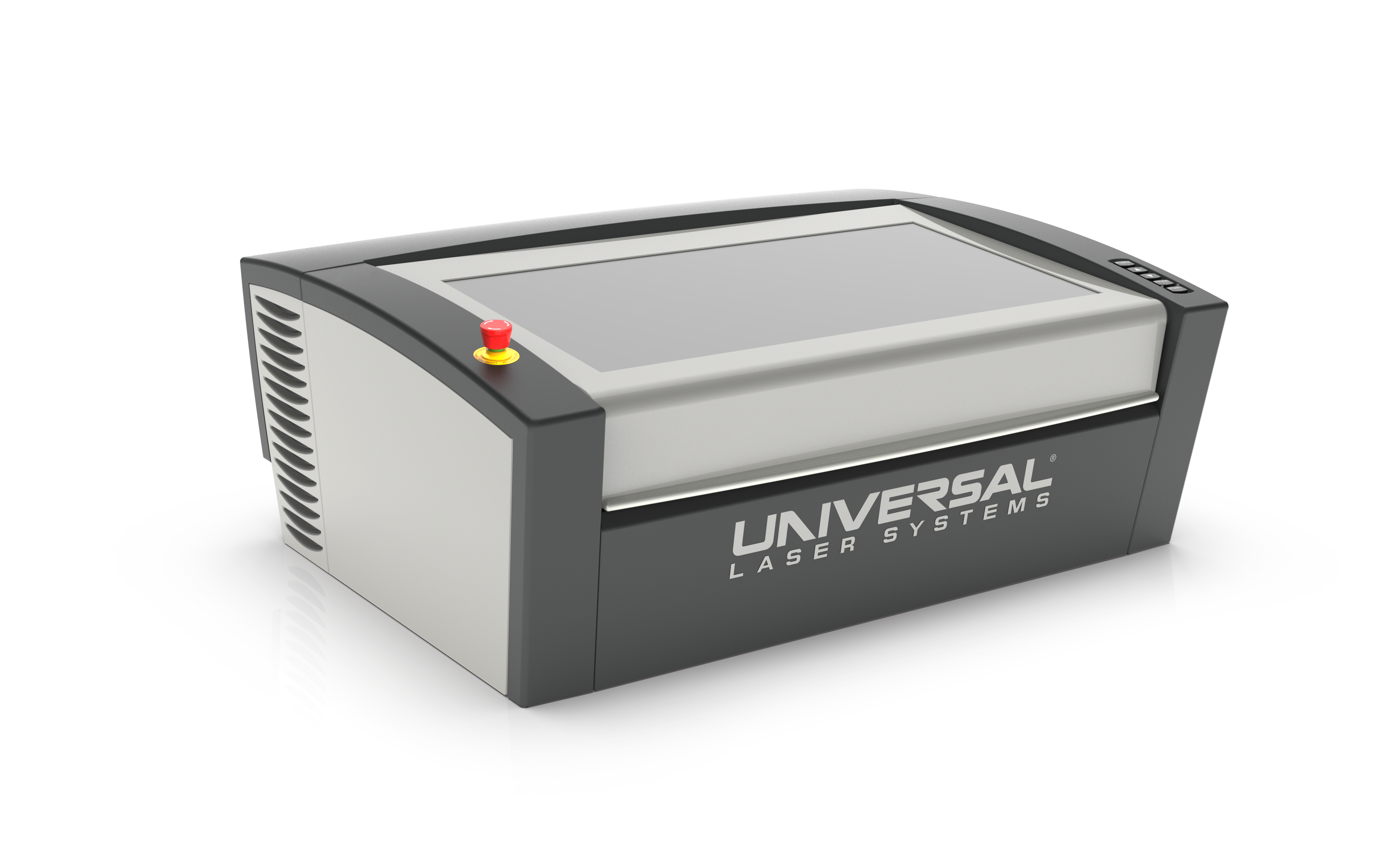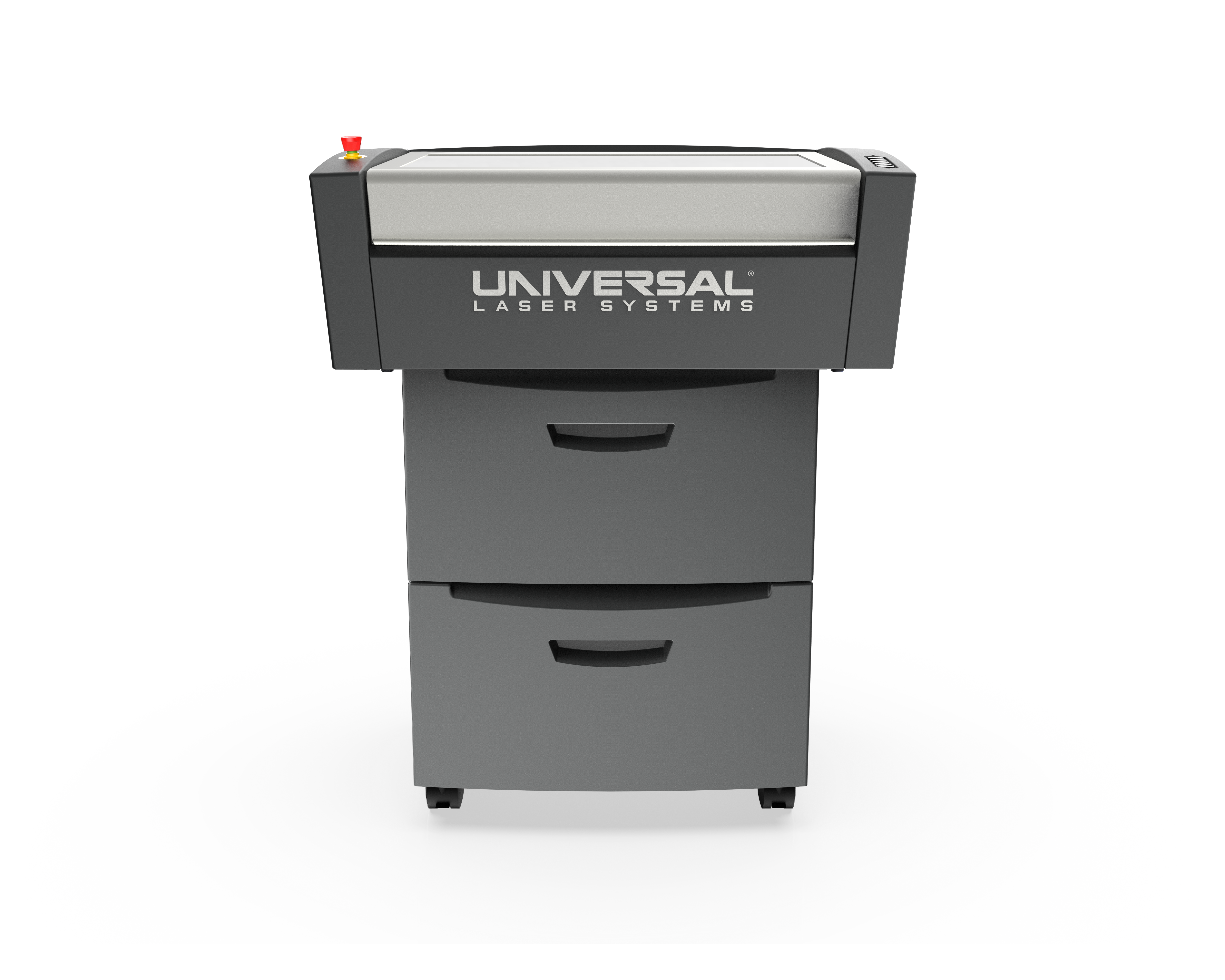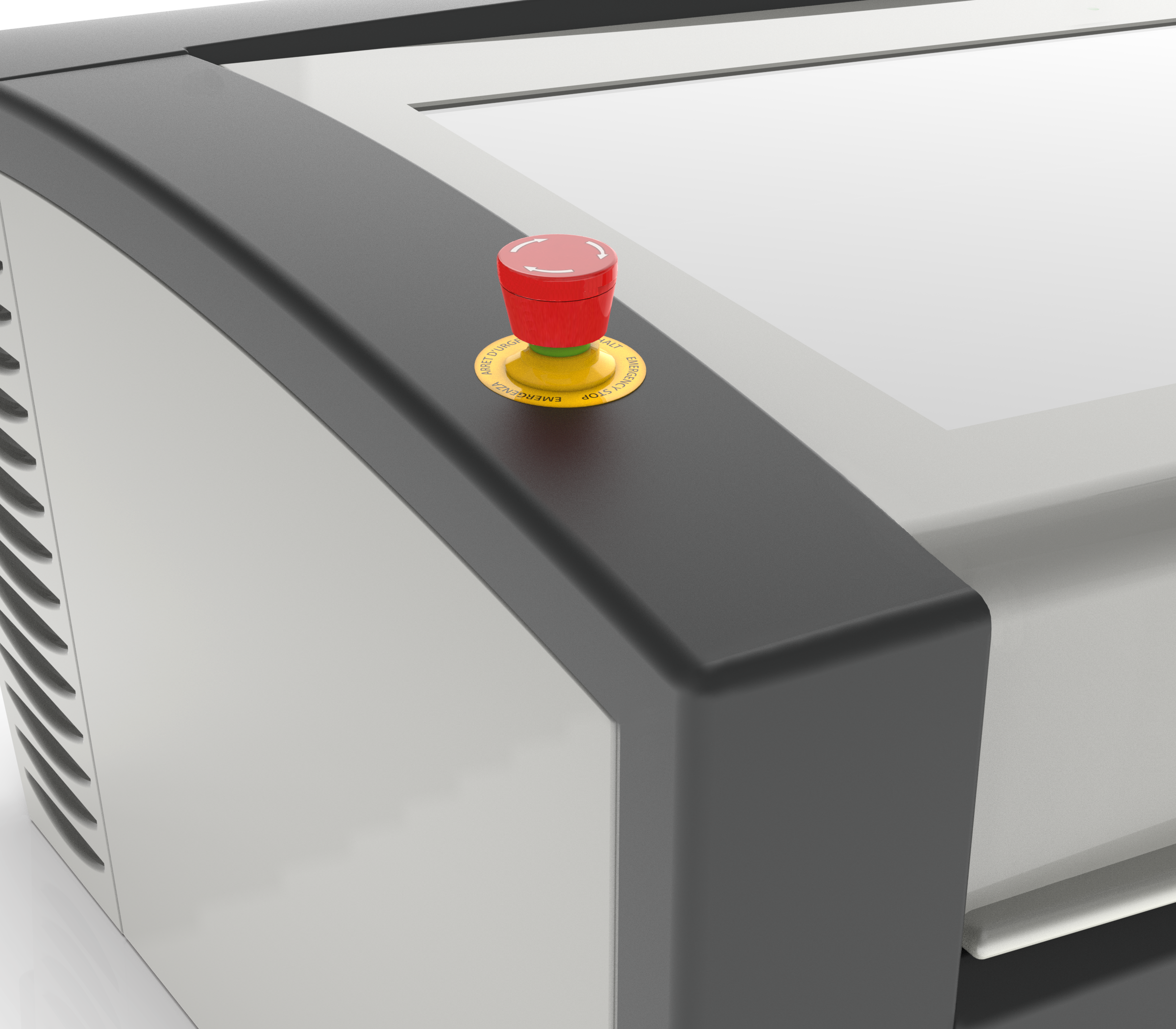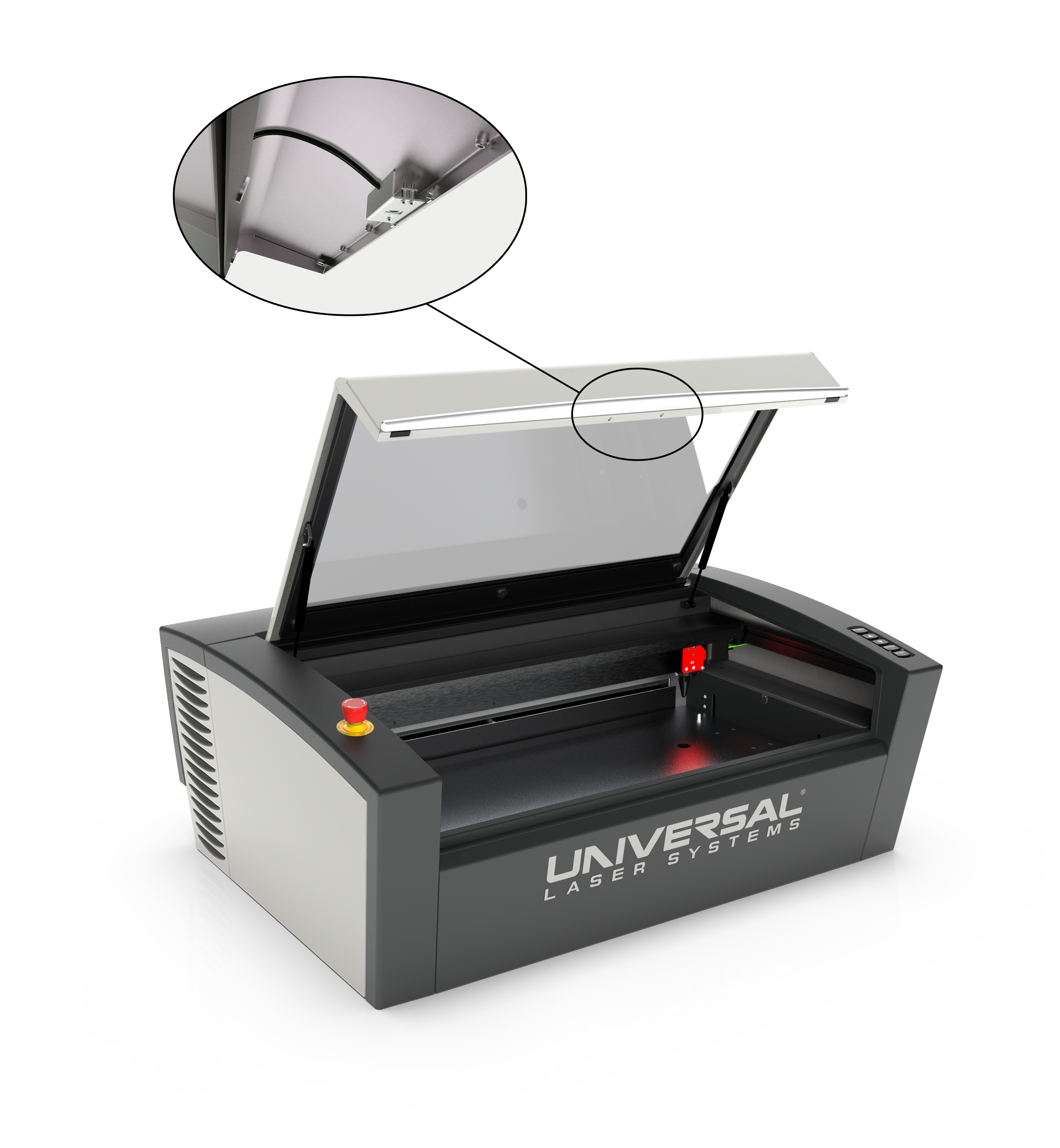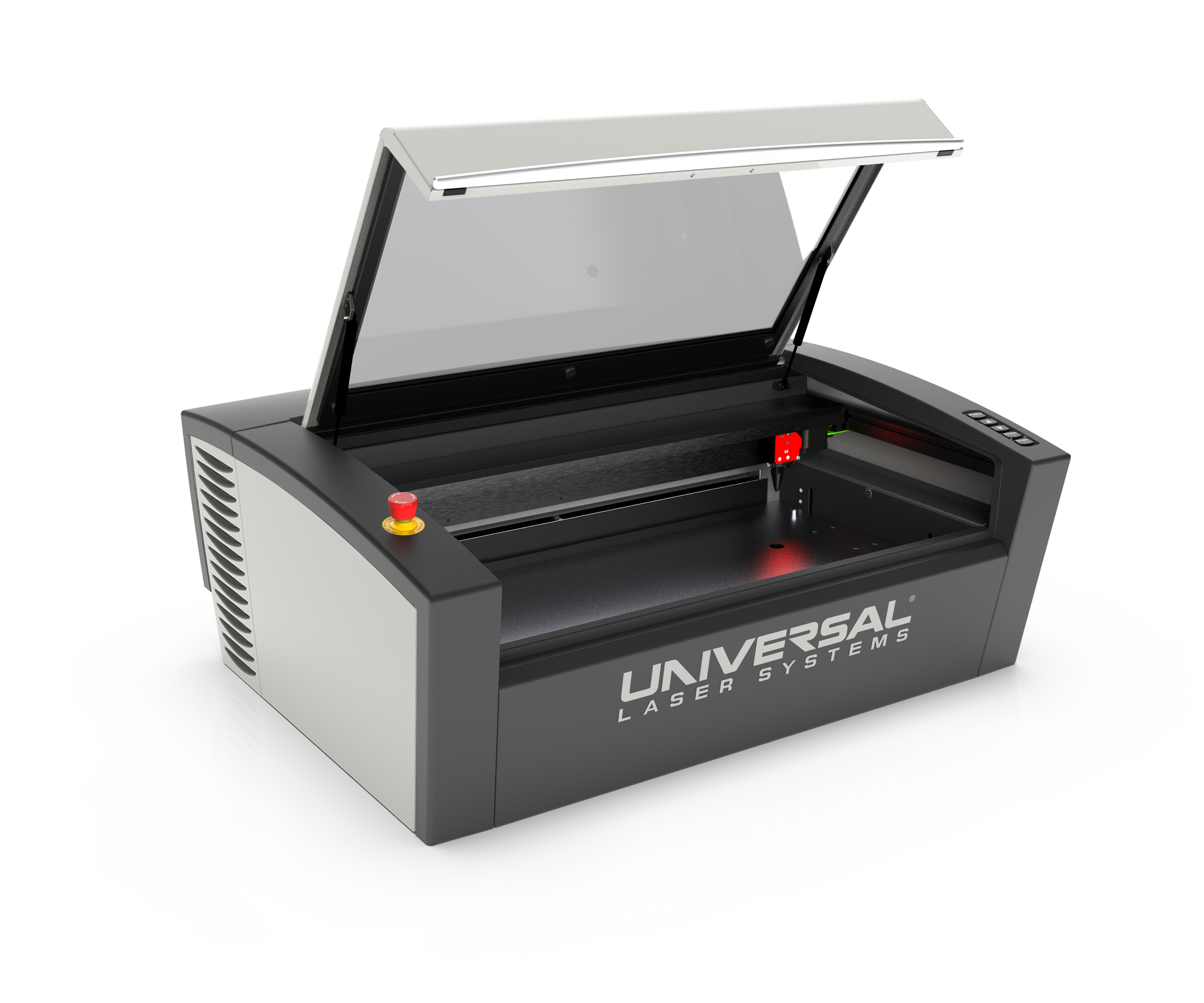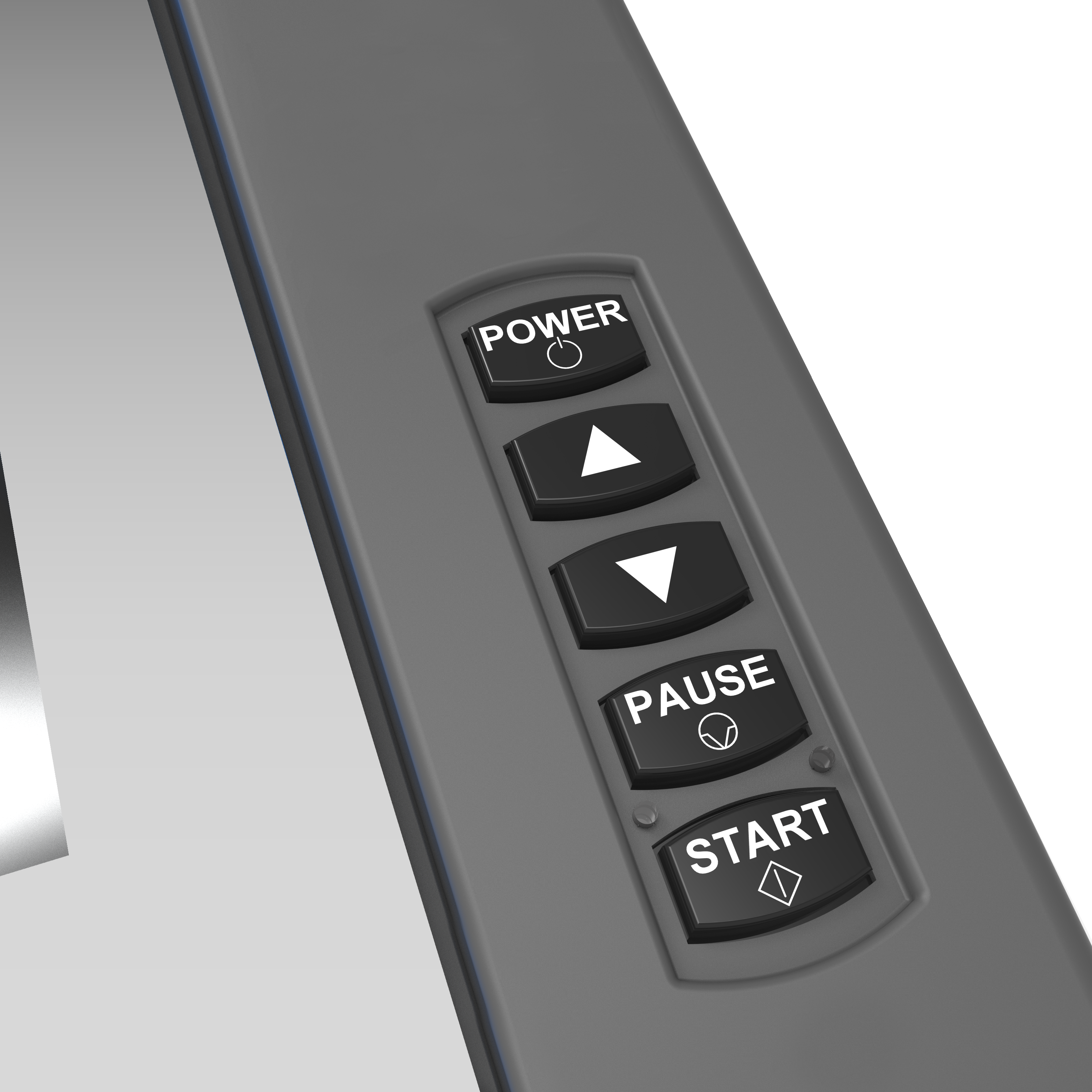Features, Configuration Components and Specifications
LSM CONTROL SOFTWARE | |
| Multiple Language Support | Supported languages include English, German, Japanese, Spanish, French and Korean. |
| User Access Control | The LSM can be set up to require log in to use the laser system. As many user accounts as required can be set up, and each can have uniquely tailored access to features and capabilities of the LSM and laser system through user permissions. This allows administrators to control access to the laser system as needed. |
| Usage Logging | Logs of all control files processed are kept on the laser system including time stamps and user information. These logs can be downloaded from the LSM in .CSV format. This feature allows administrators to monitor usage of the laser system as needed. |
| Windows PC and Mac Support | A Windows PC (Windows 10 or higher) or Macintosh (macOS 10 or higher) is required and must be connected to the laser system with a USB cable. This computer runs the LSM software that controls the laser system. |
| Design Software File and Device Compatibility | Design files can be created on any computer or device with common design software. Supported file types include PDF, DXF, BMP, JPG, Tiff, PNG, SVG and G-Code. A design file can be transferred through a device connected to the network or via the computer (Windows PC or Macintosh) connected to the laser system through physical media such as a jump drive. |
| Remote Connection | The LSM supports remote connections across any wired or wireless local network from any device (computer, tablet or phone) running common internet browsing software. This provides operators with the most flexibility with devices and operating systems when submitting design files to the laser system or monitoring its operation. Additionally, administrators can monitor operation remotely by logging in and accessing the usage logs. |
| Camera Vision System (integrated with LSM) | A door-mounted camera provides an onscreen view of a digital design file superimposed onto material placed in the processing area of the laser system. Users can visually reposition, scale and rotate design files to align with and fit onto the material quickly and easily. The camera will take pictures of the processing area when the top door is in the open position and display an image of the processing area with the user’s design file overlaid on the picture. This feature aids the user in visual alignment of design files with material placed on the laser processing support surface. A calibration function guides the user through calibration of this feature to achieve alignment accuracy of +/-.050” or better. |
| Intelligent Materials Database | An ever-evolving, integrated repository of laser processing settings for hundreds of compatible materials. The Intelligent Materials Database interface, displayed to the operator via the control software, is intuitive and flexible. Users select a material and input just a few parameters within the control software to quickly and easily begin laser processing. The database automatically calculates the needed laser system settings based on inputs of material type, material thickness and desired processes such as cutting, engraving and marking. |
| Estimate Function | The Estimate Function utilizes design file information to calculate and display laser processing time. |
| Multiple Focusing Modes | The Z height or focus can be programmed by entering the material thickness into the LSM. Once entered, the Z height will be adjusted before laser material processing. A manual focus tool is also available that can be used with a table height adjustment button on the laser system. |
| Editable Laser Processing Settings | The LSM allows the user to change all laser processing settings used to create the design file without having to reprint or reimport. The benefit to the user is the ability to reconfigure a design file in the storage queue for a different material or adjust settings to change laser processing results without having to launch the original design software. |
| Local Printing | Printing a file to the LSM is an alternative to the standard file import workflow. If this is preferred by the user, a Windows PC is required with the ULS-provided LSM Windows print driver installed. |
| Design File Storage Queue | The LSM maintains a storage queue of the design files printed or imported to the laser system. |
| Design File Relocation, Rotation, Scaling and Duplication Controls | This feature allows the user to relocate, rotate and scale a design file without having to reprint or reimport the design. Design files can also be duplicated on the laser processing field in an array with independently adjustable horizontal and vertical spacing. |
| Dynamic Energy Delivery Stabilization | A feature of the LSM where laser energy is delivered in pulses proportional to speed. It maintains consistent laser energy delivery regardless of the speed of the motion system while traversing laser processing design file paths. This feature improves consistency of laser processing results. |
| External Module Control | External modules and units manufactured by ULS including the Air Cleaner Cart, Intelligent Air Filtration UAC 2000 and ULS Air Compressor for gas assist are controlled by the LSM and are automatically turned on and off as required. |
GAS ASSIST | |
| Gas Assist with Optics Protection | Gas Assist injects a stream of gas onto the material being processed at the point where the laser focuses onto the material. Optics Protection supplies a constant stream of clean air creating positive pressure around critical optical elements, such as mirrors and lenses to keep them clean. The gas can be supplied either by an air compressor or from external gas tanks. The laser system is designed to use compressed gas for both material processing and protection of all optics exposed to the smoke and particulate in the laser material processing area. This feature requires the ULS Air Compressor or a third-party air or gas source. |
| Coaxial Gas Assist (option) | A cone-shaped attachment for gas assisted laser processing that attaches to the beam delivery system’s x-axis carriage. It directs compressed gas coaxially with the laser beam path and orthogonally to the surface of the material during laser processing. This attachment is typically beneficial for cutting applications. Gas is directed down into and through the cut path to produce cleaner edges and prevent combustion of fumes. It is also beneficial engraving applications, aiding in debris removal. Additionally, it helps protect the focus lens from effluent ejected from the material. |
| Lateral Gas Assist (option) | An adjustable attachment for gas assisted laser processing that mounts to the x-axis carriage. It directs compressed gas laterally across the surface of the material at an adjustable angle to the laser beam path. This attachment is beneficial for engraving applications as it helps to direct effluent toward the laser system exhaust plenum. |
| Compressed Air Source (option) | The ULS compressed air source is designed to provide the needed pressure to create both an adequate velocity air stream for air-assisted laser processing and adequate air for full optics path protection. This air source includes built-in, maintenance-free air drying and conditioning components to ensure optical quality air. The compressed air source connects to and communicates with the laser system for automatic turn on and off of the air source as needed. |
LENSES | |
| HPDFOTM (option) | High Power Density Focusing Optics (HPDFO) use a patented method to focus the laser’s energy to an extremely small focal spot. It drastically improves resolution in laser marking and engraving to achieve finer detailed results. Additionally, it provides sufficient energy density for direct marking of bare metals with a CO2 laser. The extremely small spot size also provides a narrow kerf for laser cutting of thin materials. |
SOFTWARE | |
| 1-Touch Laser PhotoTM (option) | 1-Touch Laser Photo is a unique ULS software application that processes photo image files to make almost any photograph compatible with laser material processing. |
MATERIAL HANDLING | |
| Flow-Through Cutting Table (option) | The Flow-Through Cutting Table consists of a thin-wall aluminum honeycomb core, evenly supported by an underlying hollow structure. The table mitigates or eliminates damage to the lower surface of a material due to reflections from the underlying support surface when laser cutting. The precision-leveled table provides a path for excess laser power and for laser processing byproducts to escape. When excess laser power passes through the material during a laser cutting process, this excess power is passed into the supporting structure where it is absorbed. |
| Rotary Fixture (option) | The Rotary Fixture provides an efficient and productive method for laser processing cylindrical, sphere-shaped, tapered and non-symmetrical objects. It provides 360-degree rotation to allow raster and vector processing around the entire circumference of the object. For raster processes, the rotary moves in a stepwise function such that each rotational step corresponds to one pass of a raster process. For vector processing, the rotary moves corresponding to the continuous path of the laser process being performed on the object. |
PRODUCTIVITY ENHANCERS | |
| Automation Interface (option) | The Automation Interface makes it possible to integrate ULS laser systems into automated environments. Programmable inputs and event-driven outputs, combined with an intuitive user interface, allow users to seamlessly adapt their laser systems to diverse automated applications. |
LASER SOURCES | |
| Patented Cross-Platform Compatibility | Laser sources can be freely interchanged between laser platforms. |
| Smart Laser Source Technology | ULS laser sources can communicate their model number to the laser system CPU, allowing the laser system to automatically adjust settings in the LSM for a particular material based on available laser power. |
| Laser Source Fan Control | All ULS air-cooled laser sources are designed with computer-controlled fans so that the speed is reduced or increased as a function of laser temperature. Fan speed is reduced to minimize noise levels when the laser source is not in use or is operating at a lower duty cycle (lower power settings). |
AIR FILTRATION AND HANDLING | |
| Air Cleaner Cart (option) | The Air Cleaner Cart provides filtration and enables mobility with a sturdy support stand and robust wheels to easily move the desktop laser system anywhere. The cart incorporates a three-stage filtration system including pre, HEPA and carbon filters to filter the smoke and particulate generated when laser processing. The LSM monitors the performance of all filters and provides a warning message to replace filters when needed. Filters can be accessed from the front of the cart through convenient drawers, allowing filters to be replaced quickly and easily without the use of tools. The cart incorporates sound-absorbing materials, making it quiet for use in any environment. The Air Cleaner Cart is controlled by the laser system which operates the cart only during laser processing to control noise, conserve energy and increase product lifetime. |
| Intelligent Air Filtration UAC 2000 (option) | A standalone unit that uses a four-stage filtration system that consists of a pre-filter, HEPA and a dual carbon filter stage, and sensors to remove laser processing byproducts from the exhaust air. Sensors monitor filtration performance at each stage and alert the operator when predefined contaminant thresholds have been reached. The unique dual carbon filter stage increases the life of the carbon filters by allowing the activated carbon to be fully consumed. Variable speed exhaust blowers maintain constant air flow rate as the particle filters are consumed. The UAC 2000 communicates with the system to turn filtration on and off with laser processing and to report filter status. An integrated CO monitor alerts the operator to dangerous CO levels in the surrounding environment. The status of the filtration system is communicated to the laser system and is displayed on screen via the LSM software. Warnings are displayed if a safe operating environment cannot be maintained for any reason. Laser processing is prevented until the warning is addressed. Example scenarios include a lack of air flow from a blockage in the filter system, a filter that has reached end of life or elevated carbon monoxide levels in the surrounding environment. Warning messages are also displayed when filters are nearing their end of life, allowing time to order replacements. |
SAFETY | |
| Metal Enclosure | The metal enclosure mitigates laser and fire penetration. There are no gaps in the enclosure even with the top door due to overlapping construction so laser energy cannot escape. |
| Laminated Safety Glass | Shatter resistant laminated safety glass provides optimal visibility into the laser processing area while completely blocking 9.3- and 10.6-micron (µm) laser wavelengths from escaping and providing a barrier for fire protection. Shatter resistant laminated safety glass offers a higher level of protection over plastic and tempered glass that shatters into many small pieces. |
| Air Cooled, Low Voltage, Metal Laser | No water leaks or high voltages like with water-cooled lasers and no risk of glass breakage such as with glass lasers. |
| Redundant Safety Interlocks | Stops laser from firing if door is opened. |
| Emergency Stop Push-Button (E-Stop) | Immediately stops the laser from firing and shuts off the system. When pressed, the 48-volt DC power supplies will be disabled, cutting power to the laser system. To turn on the laser system, the E-Stop push-button is turned counterclockwise. |
| Over-Temperature Alarm | If an unusually high temperature is sensed inside the laser system, the system will immediately stop laser processing, move the beam delivery motion system to its home position and trigger an audible alarm. |
UPGRADABILITY AND SERVICEABILITY | |
| Robust Diagnostic Features | The LSM contains a multitude of diagnostics features designed to help administrators troubleshoot in the unlikely event the system is not operating normally. |
| Remote Troubleshooting | Administrators can submit feedback to ULS Support when a problem occurs, allowing the LSM software to send diagnostics logs and other critical information to ULS Support for troubleshooting. |
| Long Laser Life and Service Exchange Program | ULS manufactured laser sources have an incredible record of long service life, with many lasers still in active service after a decade of operation. Their metal construction allows the lasers to be refurbished and redeployed for an indefinite amount of time, an advantage that is not possible with ceramic or glass laser sources. When a laser source needs service, ULS offers a laser exchange program, unique in the industry. Rather than repairing and returning the customer’s laser, which can result in significant down time, customers can quickly and seamlessly trade their existing laser for a like-new, refurbished ULS laser source at a fraction of a new laser’s cost. This makes it easy and affordable for customers to maintain and keep their ULS systems operational. |
| Warranty | The laser system includes a standard warranty of 1 year for the system platform and accessories and 2 years for the laser source(s). See the Universal Laser Systems Limited Warranty statement for details. Extended warranty is available for purchase for a total warranty period of up to 5 years on the system platform and laser source(s). Terms and conditions apply. Contact ULS for details. |
SPECIFICATIONS* | |
| Cabinet Style | Desktop |
| Laser Material Processing Area (W x H) | 24 x 12 in. (610 x 305 mm) |
| Maximum Part Size (W x H x D) | 26.75 x 14.6 x 4 in. (679 x 370 x 102 mm) |
| Rotary Capacity | Max. diameter 5 in. (127 mm) Min. diameter 0.5 in. (12.7 mm) |
| Motorized Z-Axis Lifting Capacity | 20 lbs. (9 kg) |
| Focus Lens | 2.0 in. (50 mm) |
| Focus Method | Programmable and Manual Focus |
| Laser Options | Air-cooled Laser Sources: 10.6 µm wavelength CO2 : 10, 30, 40, 50 and 60 watts 9.3 µm wavelength CO2 : 30 and 50 watts |
| Optics Protection | Integrated with Manual Gas Assist |
| Gas Assist | Manual Gas Assist (with Optics Protection) (requires air source) |
| Safety | Overtemperature Detection (audible alarm) E-Stop Push-Button (emergency stop push-button) Automatic Fault Detection |
| Laser Platform Interface Panel | Five-Button Keypad |
| Control Software | Laser System Manager (LSM) with Intelligent Materials Database |
| Camera Vision System | Door-mounted camera for visual alignment of design files |
| Computer Requirements | Dedicated PC with Windows® 10/11 32/64 bit or dedicated Macintosh running MacOS 10 or higher and one available USB port (2.0 or higher) |
| Overall Dimensions (W x H x D) | 34 x 14 x 25 in. (864 x 356 x 635 mm) |
| Approximate Weight | 95 lbs. (43 kg) |
| Power Requirements | 110V/10A; 220V-240V/5A |
| Exhaust Connection | One 3 in. (76 mm) port 250 CFM @ 6 in. static pressure (425 m3/hr. at 1.5 kPa) |
| Standard Warranty | 1 year for system / 2 years for laser source(s) |
OPTIONS | |
| Focus Lenses** | HPDFO™ (High Power Density Focusing Optics) |
| Gas Assist | Coaxial Gas Assist Attachment Lateral Gas Assist Attachment Compressed Air Source |
| Air Filtration and Handling | UAC 2000 Filtration System Air Cleaner Cart |
| Material Handling | Flow-Through Cutting Table Rotary Fixture |
| Productivity Enhancer | Automation Interface |
| Software | 1-Touch Laser Photo™ |
| Extended Warranty | Up to 5 years for system and laser sources |
| *Specifications are based on the 2.0 in. (50 mm) focus lens. Specifications are subject to change at any time. | |
| **Consult ULS for 1.5 in. (38 mm) focus lens. | |

